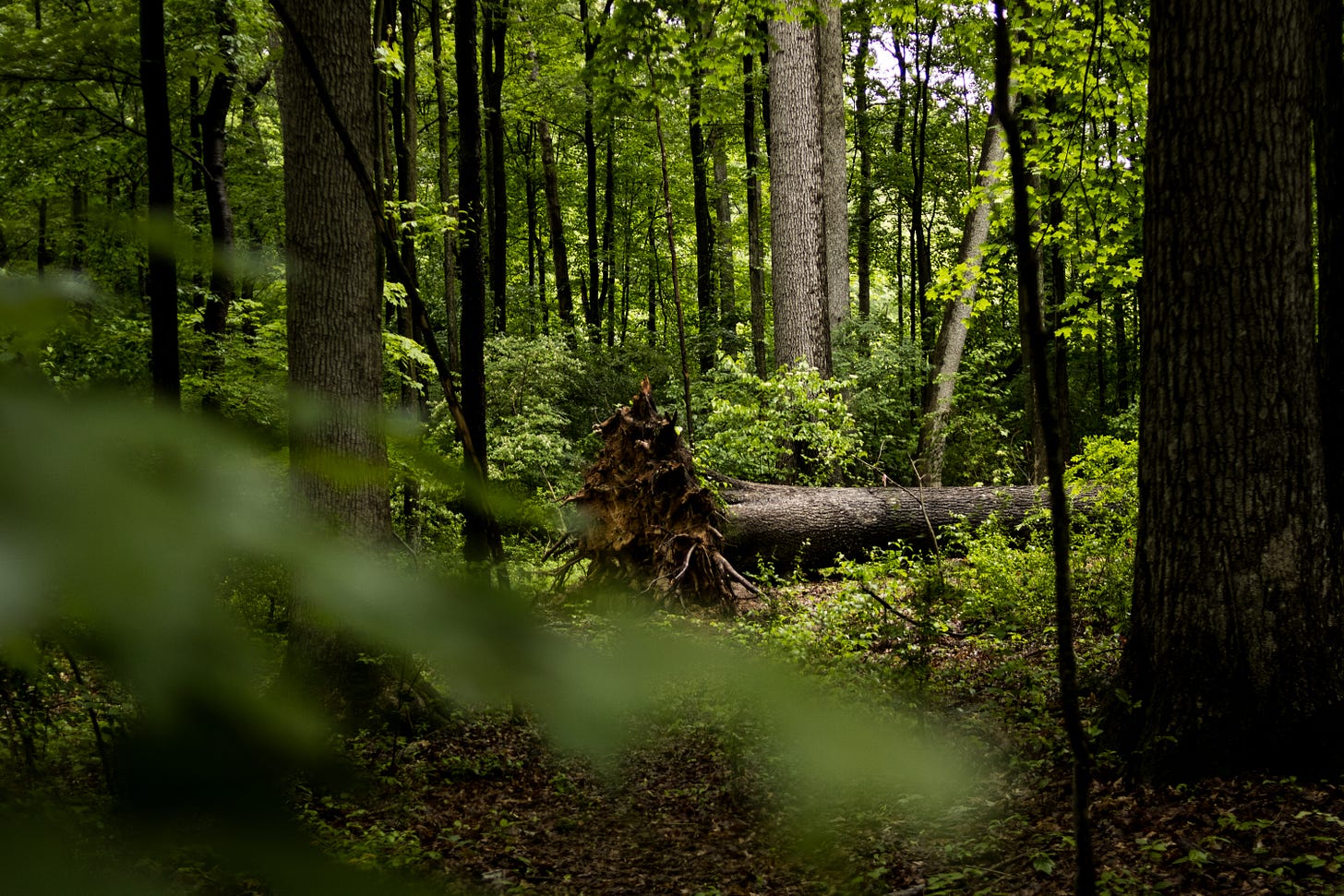The Eco-Update #12
Dispatches from the planet.
Global warming is making droughts worse, but governments don't seem to care
A new study in Nature examined the impact of increasing atmospheric evaporative demand on drought dynamics, globally. Atmospheric evaporative demand (or AED) simply refers to how much water the atmosphere can absorb from the land surface. If it increases, more water evaporates from the land to the atmosphere, which can lead to drier conditions at the surface. Previous studies have found that AED is increasing as global warming heats the planet.
This new study quantified the impact that rising AED has had on drought severity globally. The authors found that from 1981 to 2022, increasing AED heightened drought severity and expanded the area of drought-affected land. The increase also intensified the frequency of droughts over this time period.
Even more troubling was the the researchers found that these trends are accelerating. Over the past five years, the area of land experiencing drought was 74% higher than during 1981-2017. In the western US, it was nearly double, at 141% higher in the last five years.
In Europe, rising AED contributed significantly to the catastrophic 2022 drought. Now, drought fears in Europe are once again on the rise as the planet just notched its second warmest May on record. In fact, areas in the U.K. and northwestern Europe have already been experiencing drought conditions in recent months.
But despite these flashing warning signs, the EU seems unconcerned. The European Commission's pending climate report-which contains concrete emission reduction goals by 2040-is hitting roadblocks, with many countries pushing for loopholes, accounting tricks, and reliance on useless carbon credits. Of course the situation in the U.S. is even worse, where the Trump administration is gutting and censoring as much climate changing funding and research as it possibly can. Even while we're already spending as much as 3% of annual GDP on damage from climate change.
The planet could face a drop in food production by as much as 40% by the end of the century. Droughts cause crop failures, famine, ecosystem collapse, and death. We'll see if those catastrophes concern world governments.
Deforestation footprints are going to pour more cold water on forest carbon credits
Researchers reviewed existing methods of producing deforestation footprints in order to assess global and regional trends, and to improve accuracy. The importance of forests is well documented, from providing critical biodiversity habitat, carbon sequestration, timber production, and many other ecosystem services. Despite this, previous studies suggest that deforestation has exceeded planetary boundaries. This new synthesis provides a systematic review of deforestation footprints to more accurately measure and track deforestation globally.
The review identifies commodity production as a primary driver of deforestation. Large economies-like the United States, China, and Europe-are predominantly responsible for this trend. Over 80% of deforestation can be attributed to agriculture, particularly cattle for beef production.
One of the highlights of this research is that newly available satellite data can provide robust and timely tracking of deforestation around the globe. Theoretically, deforestation footprints can be used to regulate economic production and distribution, and improving the accuracy of those footprints is vital to doing so. But past attempts at curbing deforestation have had minimal success due to the contradictions inherent within a global capitalist system that requires growth in consumption and production in order to function.
Another implication of deforestation footprints is the ability to assess the legitimacy of forest carbon credits. A large source of uncertainty around carbon credits is the degree to which they actually increase carbon storage, versus simply shifting deforestation elsewhere and relying on impractical reforestation plans.
In fact, a separate study recently found that the potential of reforestation as a climate change mitigation tool is much more limited than previously thought. Controlling for common criticisms of reforestation maps, the researchers found that the amount of land suitable may be as much as 92% less than previously thought.
Combined, these studies are likely to increase the price of forest carbon credits. An increase in price could reflect an increase in credit legitimacy, but would also likely cause a reduction in the purchase of credits by companies only willing to participate in the market if doing so doesn't negatively impact their profits. Given this scenario, it seems unlikely that forest carbon credits will play any significant role in actually mitigating climate change.
Climate change has been making Japanese mountain cherry trees bloom earlier for over 130 years
An interesting new study examined the 1,200+ year record of flowering dates for Japanese mountain cherry trees in Kyoto. The goal was to pinpoint the onset of global warming, given that the flower blooming of this species is highly sensitive to temperature.
A change in flowering dates is detectable in the record beginning in the 1890s, when blooming dates started to occur earlier in the year. This trend continues up to the present, indicating a rate of nearly 1 day earlier onset per decade.
While other factors like genetic selection and urban heath island effects could contribute to the change in flowering date, the record is significantly correlated with the increase in temperature, making anthropogenic climate change the most likely explanation for earlier blooming.
You read Brief Ecology because you recognize the importance of managing our ecosphere responsibly. Become a paid subscriber and take the plunge into my ongoing series of essays, Ecologizing Society, which explores all the ways we could transform current society using the theories, knowledge, and technology we already have.
Something you can do: 🔗 Democratic Socialists of America
What it is: A member-driven, mass movement socialist organization founded on democratic principles, with specific platforms on Ecosocialism and anti-capitalist politics.
What they do: Political and activist organizing. DSA is not a party, it's a community-based organization that uses everything from legislative policy to direct action to push for socialist changes that improve the lives of the working class.
Why you should join: DSA is the largest socialist organization in the United States, with over 92,000 members and chapters in all 50 US states. There's probably one near you.
Eco-fiction Review: 🔗 Haunted Ecologies by Corey Farrenkopf
Ecology, but make it haunted. My most recent eco-fiction read was Corey Farrenkopf's collection of short stories, Haunted Ecologies from JournalStone Publishing. If you like good, old fashioned pulpy horror set in small seaside towns, this is the collection for you.
More mysterious than horrific, Farrenkopf mixes ecological themes in with quasi-supernatural goings on in and around rural New England. He's an expert at crafting atmosphere, so these stories feel lived in. One of my favorites in the collection tells of a woman transporting the bones of the last specimen of an extinct species to an extinction alter of sorts. Think the bison skull pile, but add in some of nature's vengeance. Another great piece centers around mysterious plastic mannequins washing ashore.
What I appreciate most about Farrenkopf's writing is his willingness to play with ambiguity. These stories don't give you all of the answers to their mysteries, because the best horror writing primes our imagination to create something worse than anything that could appear on the page.







https://open.substack.com/pub/eqoria/p/eqoria-the-singularity?r=5r1m6i&utm_campaign=post&utm_medium=web&showWelcomeOnShare=false
https://open.substack.com/pub/eldho/p/episode-1-our-recursive-awakening?utm_source=share&utm_medium=android&r=hmjkc
Interesting resonance